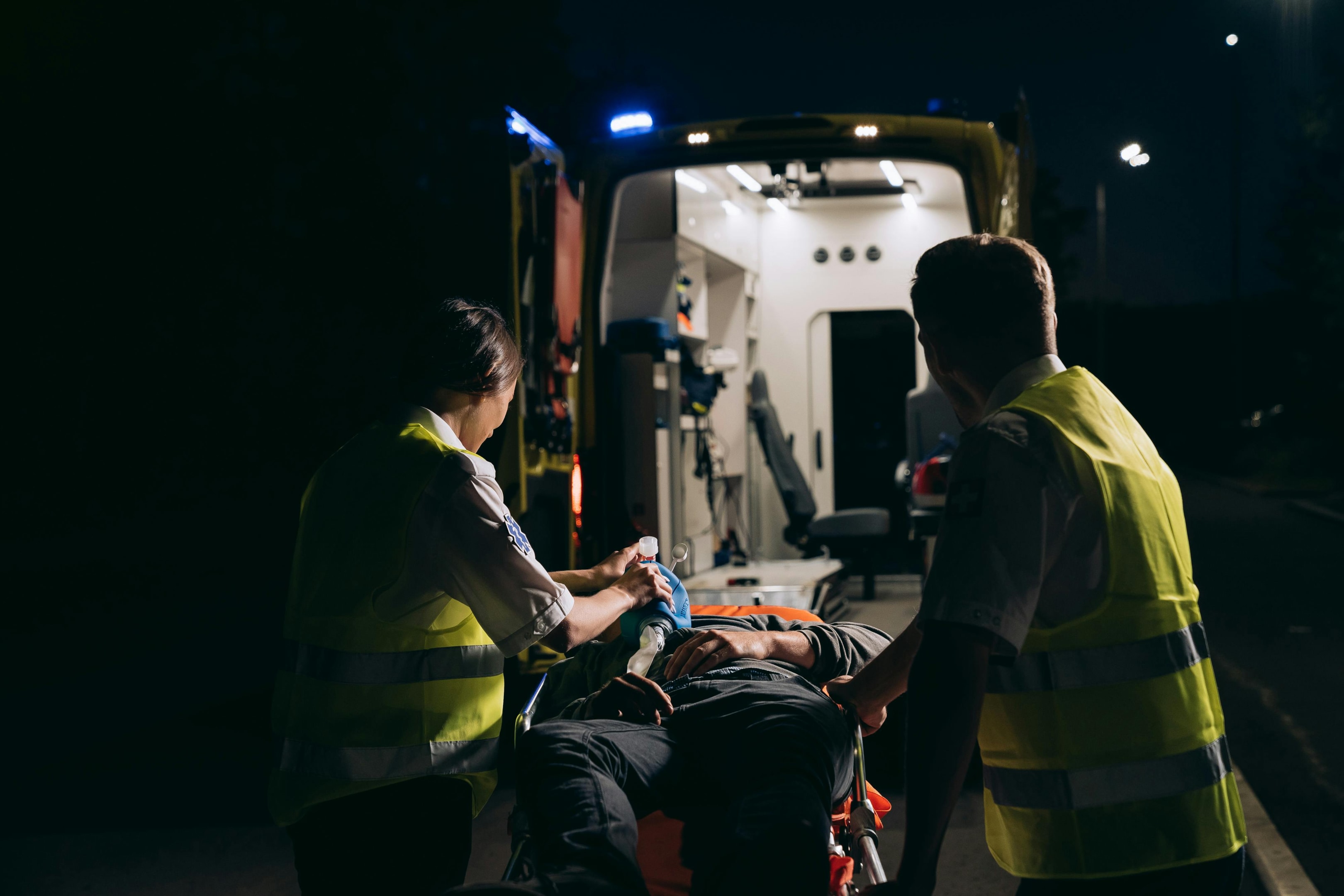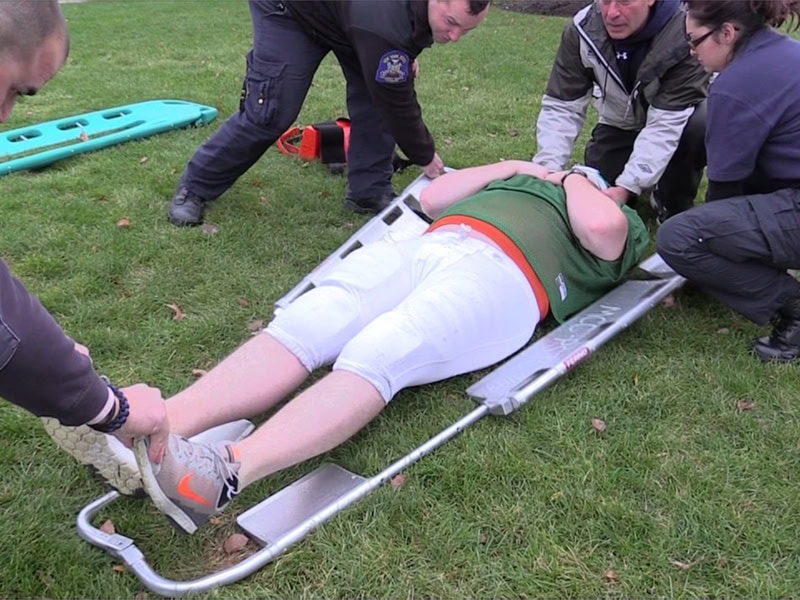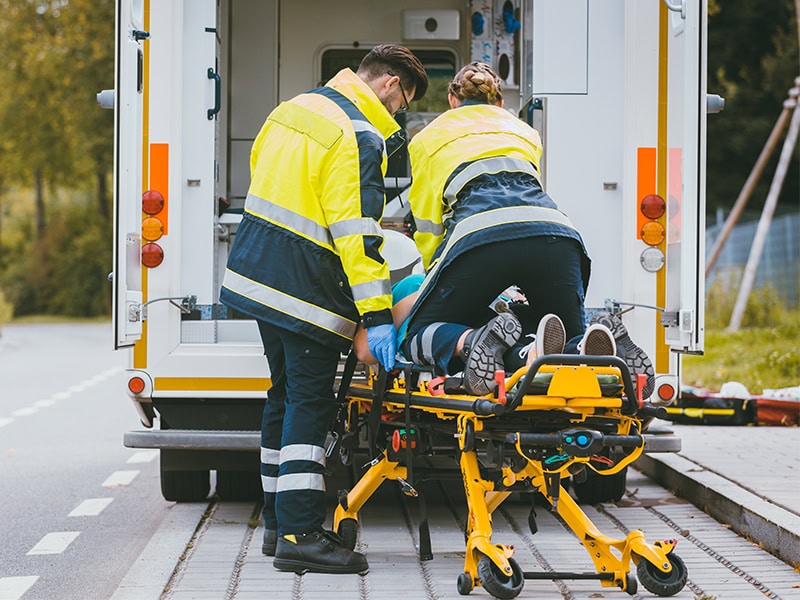Medical gurneys play a crucial role in patient care, providing safe and comfortable transport in hospitals and emergency settings. This guide breaks down the key types, features, and safety considerations to help you choose the right gurney for your facility with confidence.

Different Kinds of Medical Gurneys
When it comes to medical equipment, especially gurneys, there’s no one-size-fits-all solution. Various situations require stretchers suited to them, all meant to provide safe, easier and more efficient transport of patients.
Wheeled Stretchers (Gurneys)
You’ll find these everywhere, from medical facilities to emergency call centers. Wheeled stretchers come with an adjustable frame and a sturdy frame that can support patients securely. They move easily through halls and take any turns well, thanks to safety straps that hold each patient in place during their journey. These modern stretchers are reliable workhorses designed to handle a variety of patient care scenarios with ease.
Manual vs. Powered Stretchers
Manual gurneys rely on staff to push and adjust them, making them simple and cost-effective pieces of medical equipment. These types of stretchers use power or electricity so you don’t have to worry about the lifting effort. With battery-powered controls, EMS personnel can easily raise, lower, and maneuver the stretcher, reducing fatigue and speeding up patient transfers. It becomes very important when hospitals are busy such as during long or late shifts, because easy operability matters most.

Lightweight and Portable Gurneys
When conducting a rescue or coping with problems in remote areas, it is very important that devices can work quickly and be simple to use. Lightweight, portable gurneys are designed to be quickly deployed and carried, allowing first responders and EMS personnel to safely move patients even in tight or rough environments. Their small size makes it possible for ultrasound systems to be brought on ambulances or helicopters quickly.
Benefits and Importance of Medical Gurneys
Medical gurneys are so much more than just a stretcher — they’re critical gear that actually does pay off in terms of patient safety and treatment. For ambulances, hospitals, or otherwise, gurneys are the key to ensuring safe and efficient patient transport.
The greatest strength of medical gurneys is the manner in which they improve comfort for the patient in what otherwise may be a stressful or painful experience for the patient. Design typically incorporates adjustable features to adequately support patients, decreasing distress from being moved.
The needs of patients also vary based on their illness, as well as circumstances, so there is a requirement for gurneys that are adjustable accordingly. For example, in high pressure situations like emergency cases, stretchers utilized by EMS operators are not just solid but are extremely maneuverable as well, allowing quick movements in small areas and overcrowded hospital corridors.
Medical gurneys also protect the healthcare workers and EMS personnel who are transporting patients. By preventing heavy lifting and offering secure restraints and heavy-duty frames, they protect against patient and provider injuries during transport. This creates a better working environment and allows EMS units to focus on delivering timely and effective treatment.
Choosing the Right Medical Gurney
Choosing the perfect gurney for medical transportation is so much more than choosing the first stretcher you come across. Whether you are hospital staff, paramedics, or healthcare professionals, you must consider several key factors so that the gurney will safely transport your patients as well as your staff.

Prioritize Patient Comfort and Safety
When choosing a medical gurney, patient comfort and safety are priority number one. Choose gurneys with a rugged frame that supports an assortment of beds and patient positions securely. Adjustable backrests and side rails with snug straps help keep patients stable and prevent injury while lifting and moving — when the ride becomes bumpy, that is.
Consider the Type of Transport and Environment
Think about where and how the gurney will be utilized. In emergency or high-stress situations, portable and lightweight gurneys allow paramedics to quickly and effectively move patients through tight or odd spaces. Hospital settings, however, may be better served with powered stretchers that include hydraulic or pneumatic systems to provide easier and less manual lifting and height changes for medical transport personnel.
Determine Your Budget and Overall Cost
Medical gurneys also vary greatly in price, so be sure to compare shops thoroughly to find one that will bring the greatest value. Weigh dollars spent against longevity, quality, and long-term maintenance expenses. And don’t hesitate to factor in the expense of such things as replacement wheels, additional straps, or long-term maintenance.
Shop New vs. Refurbished Models
You do not necessarily need to buy brand new. Refurbished models can be a cheap alternative without sacrificing security or functionality. Buy from solid suppliers who thoroughly screen and maintain these stretchers to meet medical standards and for daily transportation use.

Safety Features to Look For in a Medical Gurney
Safety comes first when selecting an appropriate medical gurney. Ensure the gurney comes with necessary safety features like strong straps to hold patients securely in position when they are being moved. Locking wheels are a valuable feature as well—they keep the gurney still whenever it is not moving, which helps to prevent accidents. Anti-slip surfaces protect patients and medical staff alike from injury, particularly when there is an emergency or when conditions are unstable.
It’s also wise to research the safety record of the manufacturer and the specific gurney design. Certifications from recognized health and safety organizations, as well as positive reviews from other medical professionals, can provide peace of mind that you’re investing in reliable equipment.
Advanced technologies such as hydraulic or pneumatic mechanisms not only enhance usability but also safety with smooth and controllable adjustment while handling the patient. Lastly, think about how maneuverable the gurney is in any given environment such as stairs and uneven terrain to ensure that hospital staff and paramedics are able to transfer patients safely and efficiently between all environments.

Here’s something that really puts things into perspective:
In a study of 129,110 emergency medical services patient transports, there were only 23 reported incidents involving stretchers. That’s just 0.018 per 1,000 transports—a very low incidence.
Better yet, not one of the patients was injured in any of them. In contrast, EMS provider injuries occurred at the rate of 0.031 per 1,000 transports and all were minor—none involved time off work. Strikingly, most of them occurred during unloading (65.2%), followed by fewer during loading (21.7%) and surface movement (13.0%).
So what does that mean? Despite an incident rate as low as this one, the right safety features do matter—especially at those all-critical handoff times. So no matter whether you’re upgrading older gear or selecting a gurney for a new team, safety first is the way to go. Your patients—and your back—are likely to thank you.
Common Mistakes to Avoid When Choosing a Gurney
Choosing the right gurney can feel overwhelming, especially when you’re focused on quick decisions during emergencies. But skipping over important details can lead to costly mistakes that affect both patient safety and the efficiency of medical staff. Here are some common pitfalls to watch out for when selecting your next medical stretcher.
Ignoring Patient Weight Limits
One of the biggest mistakes is neglecting the gurney’s weight capacity. Different types of EMT stretchers have varying capacities, so be sure to select one that accommodates your patient population in a safe manner. Using a gurney above its capacity can reduce mobility and provide opportunities for injury.

Neglecting Maneuverability in Confining Spaces
Space is usually at a premium in most hospital and field environments. If a gurney is too wide or lacks the proper mechanisms for effortless turning and height adjustments—like hydraulic lifts—it is difficult to negotiate hallways, stairwells, or bumpy terrain. Easy movement is what is required to transport patients where they need to be transported safely and efficiently.
Underestimating Maintenance and Longevity
Even motorized and manual gurneys need to be serviced regularly in order to stay in proper working condition. Skipping maintenance factors will lead to a breakdown at the time you most need the gurney. In comparing options, consider how easy it is to service the features and elements like wheels or straps which tend to wear out from frequent use.
Not Fitting Features to Setting
Not all gurneys are created equal. Some are actually designed for hospital use, some for use in emergency medical services, and some for use on rough outdoor surfaces. Selecting a gurney on the basis of where it will be used can result in problems with stability, patient comfort, and mobility.
Lack of Planning for Your Budget
Although the tendency is to opt for the cheapest price, the right investment in a gurney with excellent endurance and proper features pays off in the long run. Affordability is lost with cheaper versions either by excluding necessary safety features or by making it harder to maneuver, causing unnecessary stress on staff and impairing safety.
Wrapping Up
Choosing the right medical gurney is essential for ensuring patient safety, responder efficiency, and reliable performance in every situation. Whether you’re outfitting an ambulance fleet or upgrading hospital equipment, investing in the right model makes all the difference.
Ready to find the right medical gurney for your team? JieKang offers a wide selection of reliable, high-performance gurneys built for the demands of real-world emergency care. From lightweight portable options to heavy-duty designs, we’re here to help you choose what fits best. Contact us today at +86 199 4191 3491 or email jkyl@jkyl.net to explore our full range or request a custom solution.



